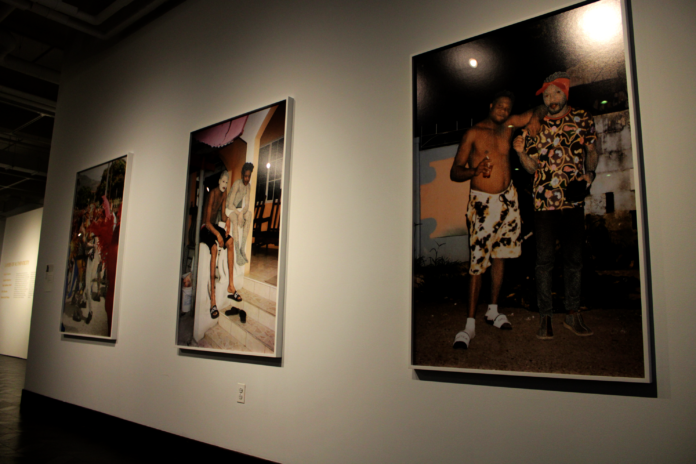
The Rowan Art Gallery presented its new exhibition “Layers of Authenticity,” on Nov. 6 and will be on display until Dec. 20, 2023. This new gallery focuses on the stories that five artists from around the world share in their original art pieces. The pieces turn away from traditional art paintings, instead, they are done by altering imagery pulled from sources such as media, photography, and the internet.
The five artists who displayed their work at this exhibition are Paul Anthony Smith, Gabriel Martinez, Steven Earl Weber, Maria Dumlao, and Eric Toscano. Each artist created works of art that fit the theme of authentic pieces showcasing powerful statements about the political, social, and environmental landscapes of the world.
Mary Salvante, the director and chief curator of the Rowan Art Gallery, plays a key part in picking which exhibition will be next and also serves as an outreach to the community to get a hold of specific artists that fit the theme of the next exhibition. She had a particular vision for how she wanted to go about identifying how the “Layers of Authenticity” exhibition should’ve been displayed.
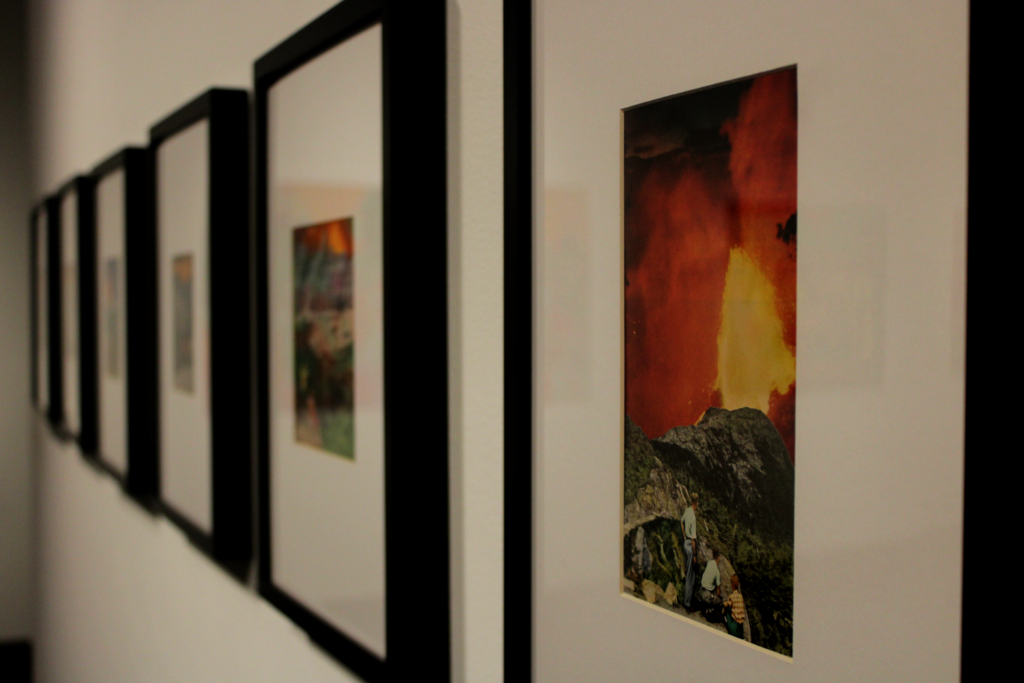
“What I was interested in doing was having an image-based exhibition, which includes primarily photography, but also image pull from the Internet and other image sources, like archival materials, such as prints, as well as imagery from publications,” said Salvante. “Within the artists that were that I selected, the content of the work also addressed and explored different facets of social relationships, whether that had to do with their personal lives, or if it had to do with a broader scope of ideas around that.”
Every artist that Salvante reached out to sent art that fit this theme of unveiling certain truths about places, people, and society as a whole; none of the artists had similar statements in their work.
Maria Dumlao, who is an artist based in Philadelphia, created wall-hung prints using an RGB color system, and when a person views these prints they may not see something at first. Through filters with the primary colors: red, green, and blue, viewers can see that each color shifts their attention to a specific part of the painting. For example, in one of the prints, “Fire At Will With Snakes,” when one holds the green up their eye, they will find that the color of the people in the picture is erased, but the color of the snakes is enhanced. This is because selected parts of the painting will be enhanced using the filter, meaning other parts will be concealed.
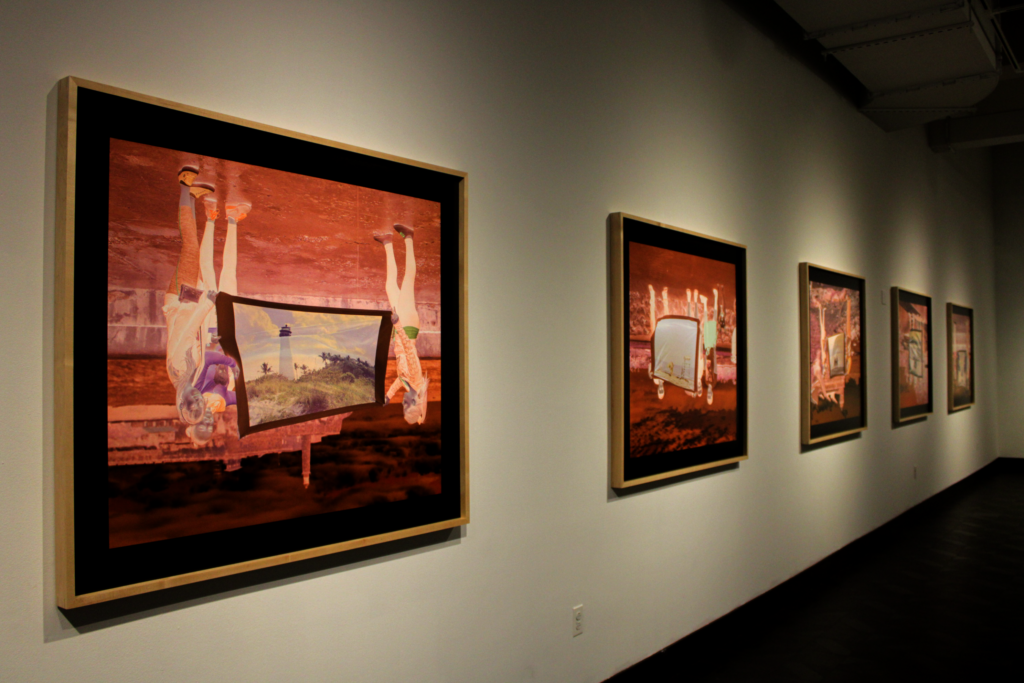
Her prints allow viewers to understand the story around the impacts of colonialism in the artist’s country, the Philippines. With the filters having different colors, the enhancement of certain colors makes viewers want to know what’s being hidden and what’s being amplified.
Eric Toscano, who is a Rowan alumnus, focuses his art pieces on collages made of images of vintage magazines. His main purpose for his collages is to demonstrate the calm, passive responses of the people towards environmental disasters. It states how the negligence of climate change is becoming even more severe and how no response will bring no change. He also spoke about what he wants viewers to see in his collages.
“I would like viewers to focus on the technique. Each collage is hand cut with an X-acto knife,” said Toscano. “The work could be done digitally, of course, but for me, a big part of the finished product is the process and the materials. Each one uses at least three layers cut by hand from vintage images, in this case, fifty to sixty years old.”
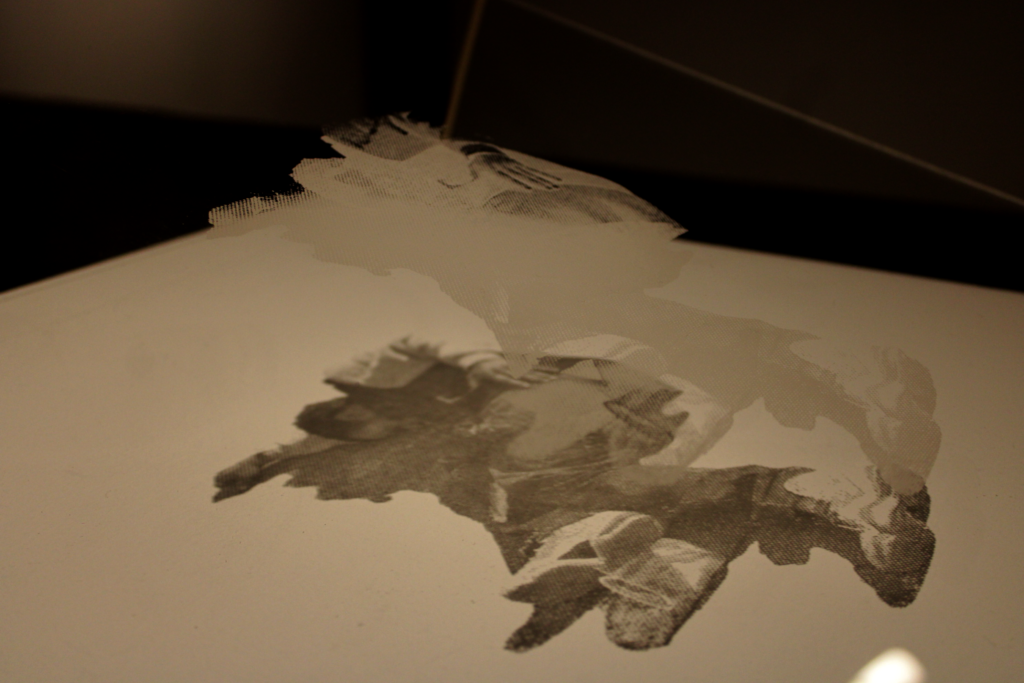
Gabriel Martinez, another artist with his work on display is Cuban-American. His focus is on photography and digital software to create photos with negative filters. In his section of the gallery, he shows the popular Cuban-American locations in the bayside. They are printed on fabrics that were held by Cuban citizens in Havana. The pictures of the Cuban citizens are printed upside-down negatives, flipping their orientation, and the image on the fabric is upright.
His series of pictures depicts the dislocation and communication between Cuban citizens and Cuban-Americans. This issue was very important to his identity and also demonstrated the relationship between different types of Cuban people.
Paul Anthony Smith is a Jamaican artist based in New York City, who creates picotages exploring the issues of identity within the African diaspora. His technique involves photographing subjects and making tiny cuts on the surfaces of his subjects. Then he pulls back the paper of where he’s cut and it creates a textured kind of surface. He creates this sort of border between viewers identifying the subject to protect their identity. It is a sort of protection from the bombardment of different social pressures that these subjects could face. Smith creates these photographs to spark conversation on the cultural confusion created by colonialism.
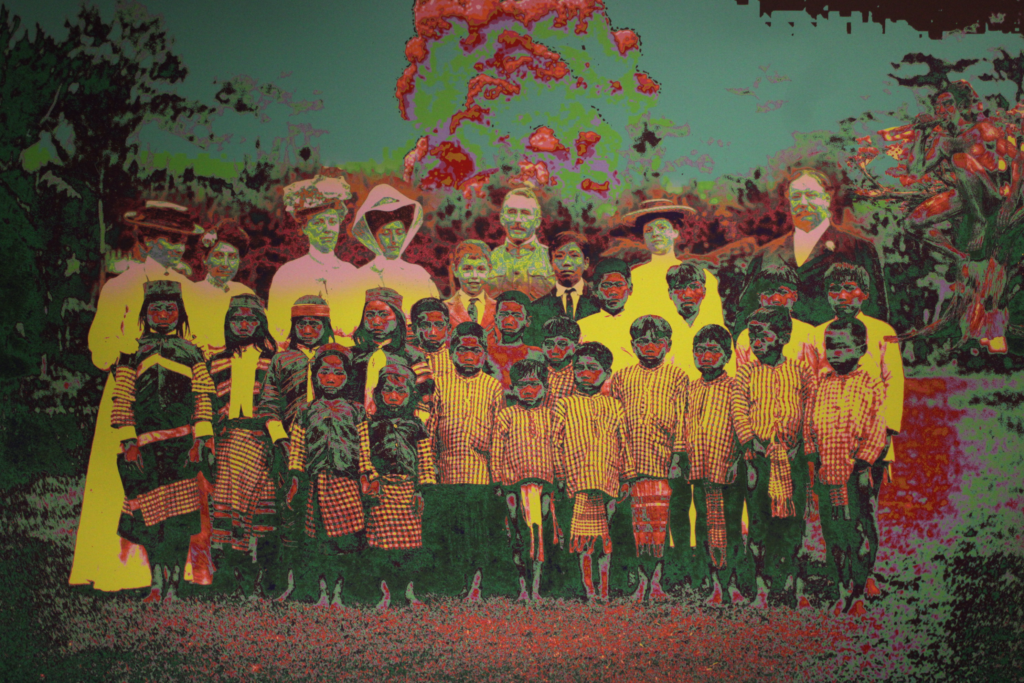
The last artist that is displayed at the Rowan Art Gallery is Steven Earl Weber, whose work focuses on highlighting the opioid crisis in Philadelphia. Specifically, he creates portraits of the residents of Kensington and viewers get to see the effects of the addictions that a lot of these residents have. Weber has seen the effects of addiction on these people and has also seen how these people are constantly ignored or neglected. To bring light to the victims of drug addictions, he creates portraits of them printed in white ink on a mirror. The shadows seen from the gallery lights serve as a projected portrait of the victim, which Weber says is a metaphorical version of who they have become.
This exhibition will continue to be on display till Dec. 20, and Salvante invites visitors to examine each piece with an open mind.
For comments/questions about this story DM us on Instagram @thewhitatrowan or email the.whit.arts@gmail.com





